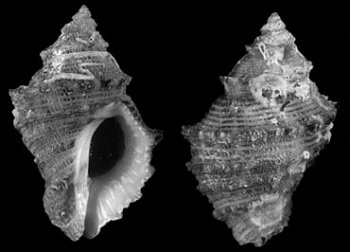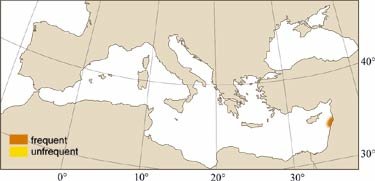
|
Relevant Synonyms
Misidentification
|
|
| photo: S. Gofas / Coll. H. Zibrowius |
|
SHORT
DESCRIPTION
color :
outside of a yellowish tan color, with dark brown mottles or flames over the spiral cords only, attenuated in the intervals. Inside of aperture white.
common size :
30-40 mm. |
DISTINGUISHING CHARACTERISTICS
BIOLOGY / ECOLOGY
habitat :
in Indian Ocean under rocks (Bosch et al., 1995); in the Mediterranean, this species has so far been found on hard substrates in a harbour environment. |
|
1st
Mediterranean record
|

|
|
DISTRIBUTION
|
ESTABLISHMENT SUCCESS
speculated reasons for success :
|
|
|
MODE OF
INTRODUCTION |
IMPORTANCE TO
HUMANS |
|
KEY
REFERENCES
|
|
|
 Thais rugosa (Born, 1778) [Bosch et al., 1995]
Thais rugosa (Born, 1778) [Bosch et al., 1995]